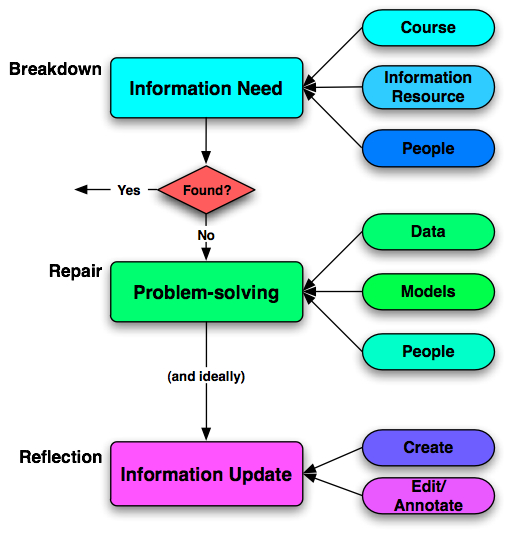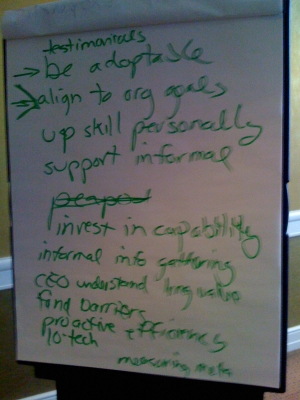Over at eLearn Magazine, Lisa Neal Gualtieri gets elearning predictions for 2009, and they’re reliably interesting. Here’re mine:
The ordinary: Mobile will emerge, not as a major upheaval, but quietly infiltrating our learning experiences. We‘ll see more use of games (er, Immersive Learning Simulations) as a powerful learning opportunity, and tools to make it easier to develop. Social networking will become the ‘go to‘ option to drive performance improvements.
The extraordinary: Semantics will arise; we‘ll start realizing the power of consistent tagging, and start being able to meta-process content to do smart things on our behalf. And we‘ll start seeing cloud-hosting as a new vehicle for learning services.
I’ve been over-optimistic in the past, for example continuing to believe mobile will make it’s appearance (and it is, but not in the big leap I hoped). It’s quietly appearing, but interest isn’t matching the potential I’ve described in various places. I’m not sure if that’s due to a lack of awareness of the potential, or perceptions of the barriers: too many platforms, insufficient tools.
I continue to see interest in games, and naturally I’m excited. There is still a sadly-persistent view that it’s about making it ‘fun’ (e.g. tarted up drill and kill), while the real issue is attaching the features that drive games (challenge, contextualization, focus on important decisions) and lead to better learning. Still, the awareness is growing, and that’s a good thing.
And I’ve been riffing quite a lot recently about social networking (e.g. here), as my own awareness of the potential has grown (better late than never :). The whole issues of enabling organizational learning is powerful. And I’ve also previously opined about elearning 3.0, the semantic web, so I’ll point you there rather than reiterating.
So there you have it, my optimistic predictions. I welcome your thoughts.


